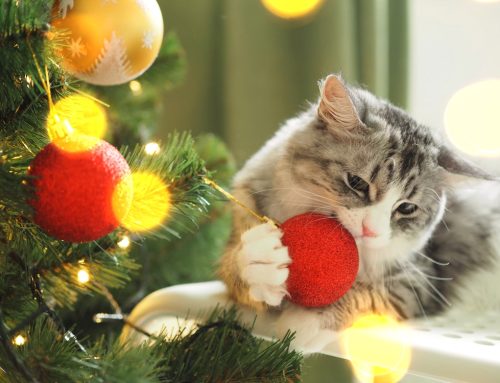Cats are masters in the art of subtlety, and often leave us scratching our heads, trying to understand, “What is my cat saying?” To better understand your cat, pay close attention to their body language. This is the way they communicate their feelings, wants, and needs. However, deciphering “cat code” can be challenging, and certain postures carry different meanings, depending on the context. Our team at Star of Texas Veterinary Hospital translates feline body language, so you can better understand your cat, and strengthen your bond.
Relaxed cat body language
We all want our cat to be happy, but sometimes we’re not sure if they love us, like us, or simply tolerate us. The following signs prove that your cat is completely content:
- Calm tail — When your cat feels relaxed, their tail will be extended, flat, and fairly still.
- Neutral ears — Cat’s ears usually face forward in the neutral position, which indicates they feel content and relaxed.
- Slightly closed eyes — A content cat’s gaze won’t be focused on anything in particular, and they may almost close their eyes, as if they are nodding off. Because closing their eyes leaves them vulnerable, this shows that they feel safe and secure.
Playful cat body language
Have you ever walked into the living room, without a care in the world, when suddenly you’re ambushed by a ferocious, furry, ankle-biter? Don’t take your cat’s sneak attack personally—cat play displays their instinctual hunting behavior. You’ll know your cat is in the mood to play if you notice the following cues:
- Flicking tail — A cat whose tail is arched over their back and flicking back and forth is probably ready to play. If their tail is down, and their rear end raised, then watch out—they may be preparing to pounce!
- Raised ears — A feisty cat’s ears will be raised and facing forward.
- Big eyes — When your cat feels playful, their pupils will appear slightly dilated.
Fearful cat body language
Kitten socialization requires multiple positive interactions with people and other animals. Without these experiences, a cat may become fearful, demonstrated by the following cues:
- Flat ears — A frightened cat will flatten their ears against their head, and point sideways or down.
- Wide eyes — A fearful cat’s eyes will be wide open, with dilated pupils.
- Tucked tail — If your cat is scared, they will make themself smaller by lying on their belly, or crouching directly on top of their paws, with their tail curled around their body.
Agitated cat body language
Cats don’t always give much warning before letting us know they are bothered—if you’ve ever assumed your cat’s exposed belly meant they wanted a nice belly rub, you know what we mean. An irritated cat’s body language communicates that they want you to stop what you’re doing. If they continue to feel threatened, their annoyance may escalate to aggression. The following cues may be your cat’s subtle way of telling you to leave them be:
- Head turned away — If your cat is not enjoying something, such as the belly rub, they may turn their head away in protest.
- Ears facing backward — A cat who is irritated will turn their ears back, but won’t completely flatten them to their head, like they would when they are fearful.
- Tail twitching — If your cat’s tail is rapidly and erratically swishing or twitching, they are likely less than pleased.
- Low growl— A highly agitated cat whose initial warnings have been ignored will vocalize their frustration with a growl or high-pitched meow. This indicates that they are becoming more uncomfortable, and may resort to biting or scratching if they continue to feel stressed.
Ill cat body language

Once you understand your cat’s body language, you’ll be better able to identify illness signs. The following can signal that your cat is sick, and should be examined by their veterinarian:
- Low hanging head
- Drooping ears
- Tucked tail
- Crouched position
- Dully, glossy eyes
You and your cat may speak different languages, but learning to read your pet’s body language will increase your understanding, and improve your communication. However, if you notice any sudden changes in your cat’s body language and think they may be ill, contact our team at Star of Texas Veterinary Hospital.






